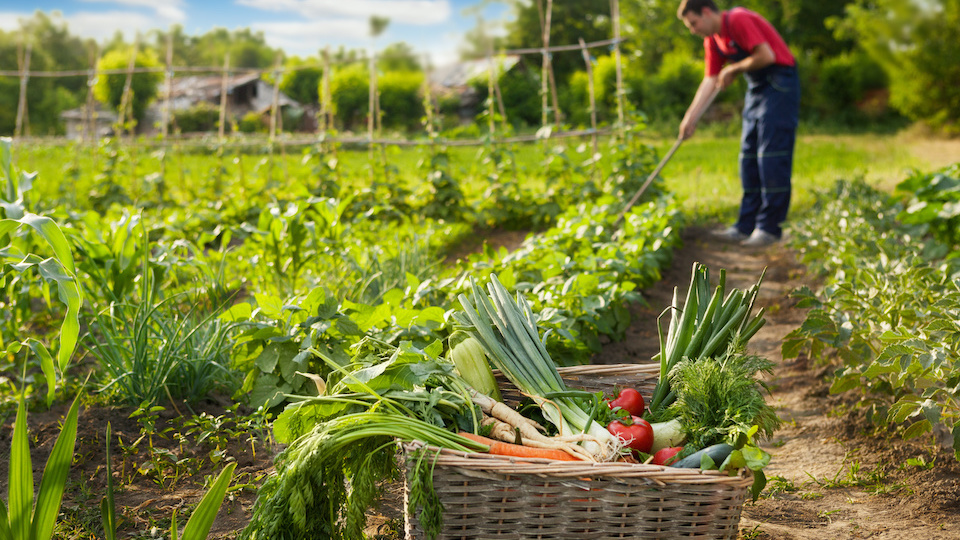We tend to think of homesteading as living on a farm. Don’t assume that you need acres to live off the land or be more or even wholly self-sufficient. A half-acre can fit a garden of a decent size, a small orchard, a small greenhouse, a work shed, a chicken coop, and even a couple of beehives.
If you have the urge to homestead but have limited property, don’t give up. Listen to the advice of those who have already done it. Instead of reinventing the wheel, heed these tips that come from real, small-space homesteaders.
Check out plans from other homesteaders.
Get inspiration and practical guidance from people who have already made small homesteads work. You can easily find plans and guides from families homesteading on an acre or less. Check out the layouts of these small farms to see how others make everything fit. Your property will have unique features, but these plans provide valuable insights and ideas to help you make your own plan.
Make that plan first.
It’s essential to check out layouts from other homesteaders so you can make your own detailed plan before actually building your small farm. A good plan takes some time to create, and you are probably eager just to get started. But time spent working on a layout will save time and mistakes once you finally get down to work. You’ll know that vegetable bed fits before you dig up the ground for it and find out it’s not the best spot after all.
A major part of the planning process should be research. As with laying out the space, you are likely to make some mistakes if you dive into the work without fully understanding how to farm or raise animals. Spend time reading and researching as you make a plan.
Start small.
Unless you have no other job and unlimited funds, creating your homestead all at once and from scratch is untenable. This is tough work and ongoing, sometimes seemingly endless maintenance. Pick one thing to start with, like a vegetable garden or a flock of chickens, and go from there.
Starting small also helps to manage unrealistic expectations. Homesteading is difficult. Don’t expect to be totally self-sufficient within a year or even two. You will need time to make mistakes, learn from them, and adjust.
Think about irrigation.
Switching from a typical garden and yard to a homestead means thinking about all the details. How will you water your new fruit trees? What about the bigger vegetable patch? Consider installing an irrigation system to make watering easier and more efficient. Collecting rainwater may also be a good option, at least to supplement the regular water supply as you work toward self-sufficiency.
Make every space, every plant count.
With less space and a goal of more self-sufficiency, everything in the yard must count. A shrub that looks nice but doesn’t produce edible berries may need to go. Replace it with a blueberry bush or raspberry canes. Take out that pretty perennial bed and replace it with vegetables or a strawberry patch.
Taking out trees may not be realistic, but if you are planting new trees, consider what they can provide. Use fruit trees or plant a walnut or pecan tree so you can harvest the nuts in the fall. Make other space vertical too. Grow plants on vines and trellises or in vertical containers to get everything out of the space.
Make sure you plan a space for a compost pile as wel. Nothing should go to waste on any homestead, but this is especially true on a tiny farm. Use fall garden waste and vegetable and fruit leftovers to make compost to return to the soil.
Focus on small animals.
Homesteading involves raising animals, but with only a half-acre, you’ll have to go small. It simply isn’t enough space for cows, and it may not be enough for goats either. Chickens are excellent for small spaces. You may not get any dairy, but you can get eggs and meat with a well-managed flock.
Another small animal you can raise on a half-acre homestead is the honeybee. You’ll get two benefits out of an apiary: the honey and honeycomb that you can eat and use for wax and pollinating your fruit trees and vegetable patch.
Learn how to preserve food.
On a small homestead, everything you produce matters. If your goal is to get closer to self-sufficiency in a small space, you can’t let any food go to waste. Learn how to freeze, can, and store produce. You may need a cellar, an extra freezer, or a bigger pantry space to meet these goals.
If you have never preserved food before, learn how to do it safely. Many local extension offices have classes in canning and preserving foods. You can also learn from homesteaders sharing knowledge online or in your community.
Look into allotments.
If you find that your space is too small to match your dreams, but moving or buying a new property isn’t an option, consider growing food somewhere else. Allotments are off-property gardens, where you can rent to grow vegetables or grain or even raise livestock. Start with people who you know have property. They may be willing to let you rent space for a reasonable fee, or they may consider a trade, some of the food for the use of the land.
Homesteading on a half-acre is doable, and it is possible to approach self-sufficiency, even if you can’t get all the way there with so little property. Start small, do your homework, and make a plan; these are the essential starting points for any new homestead.
-Mary Ellis




